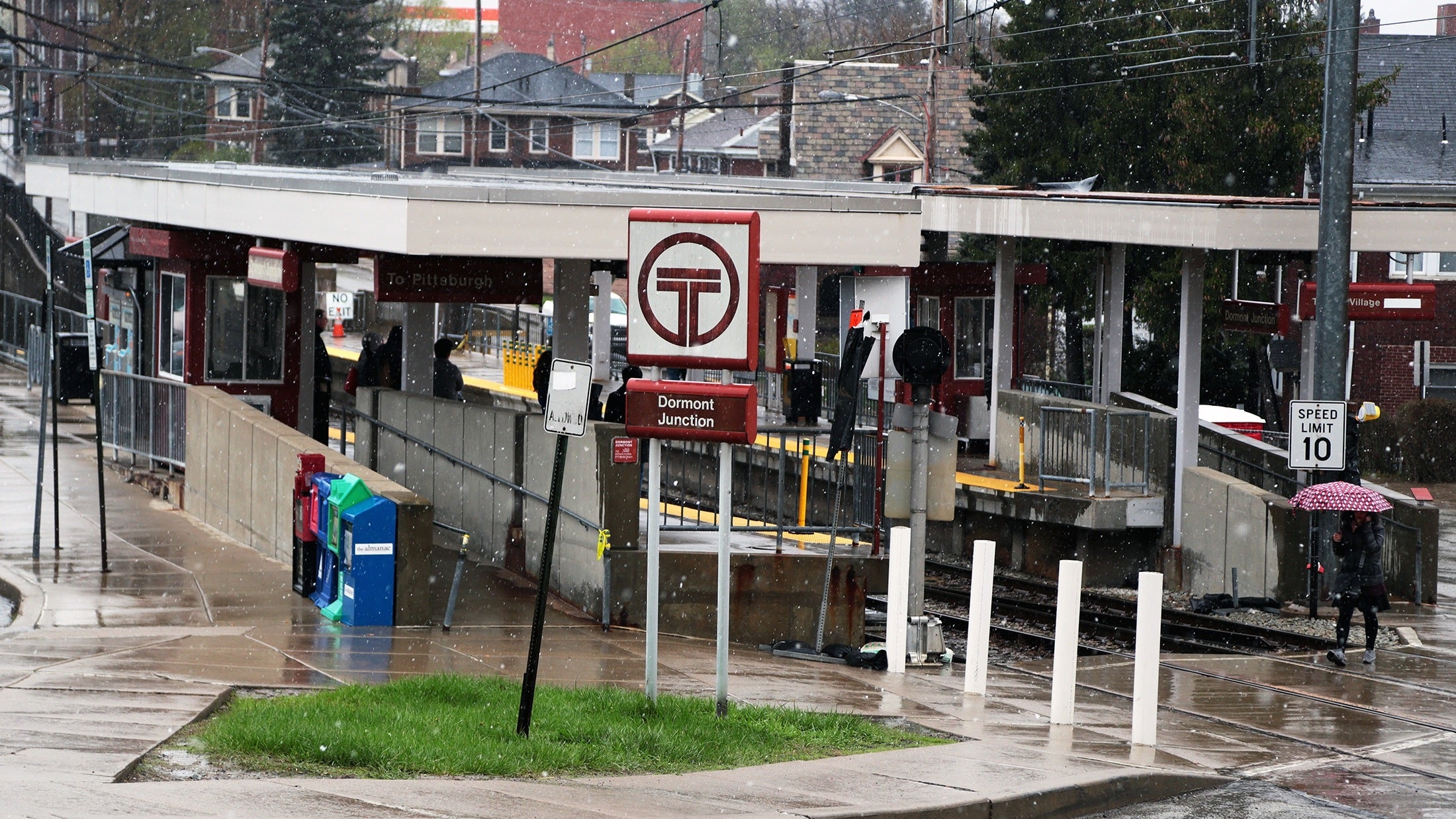Pa. lawmakers set to approve changes to law supporting transit oriented districts

The light rail station in the Pittsburgh suburb of Dormont, one of the 13 TRID study locations (Ryan Loew/WESA)
A bill aiming to revamp a barely used state law promoting transit oriented development passed the state Senate unanimously Monday.
The bill, SB 385, overhauls the Transit Revitalization Investment District (TRID) Act of 2004.
Transit oriented development refers to clustering high-density, mixed-use buildings around transit hubs like train stations. Proponents argue that TOD helps limit urban sprawl, improves mobility and leads to higher property values.
Former Senate Majority leader Dominic Pileggi introduced the bill back in February, and expects it to move through the state House of Representatives without delay. The bill addresses one of the TRID Act’s fundamental flaws: they don’t raise enough money initially to fund investment. The bill allows proposed TRIDs to use a “tax capture” funding mechanism for infrastructure improvement funds.
The original bill provided money for TRID planning, leading to 13 TRID studies across the Commonwealth, but the lack of additional funding made actual implementation untenable. Only one project made it past planning to implementation: the East Liberty Transit Center in Pittsburgh.
Pileggi’s TRID fix was itself amended earlier this month to clarify some ambiguities and to direct the Department of Community and Economic Development to approve two new TRIDs within six months of the bill’s enactment.
When asked whether six months would be enough time for municipalities and agencies to put together TRID applications, and then for DCED to review and approve those applications, representatives from Pileggi’s office pointed to the 13 unimplemented TRID studies that are right now just collecting dust, suggesting that it wouldn’t be difficult for municipalities to quickly turn the studies into applications.
Those 13 proposals are evenly split between in the greater Pittsburgh and Philadelphia areas: there are seven SEPTA proposals (five around regional rail stations located outside Philadelphia), and six proposals among Allegheny, Beaver and Westmoreland counties.
Last week’s amendment also allows the DCED to approve additional applications (after the initial two) removing an ambiguity in the bill’s language that had some supporters concerned that it would only authorize two new TRIDs.
That’s good news for the proposed bill proponents like Upper Darby’s Mayor, Thomas Micozzie. Micozzie is quoted in a Pileggi press release saying that “a TRID would greatly enhance the opportunity for businesses to locate in and around the 69th Street Transportation Center.” Creating a TRID there has not been studied yet, but the studies are relatively inexpensive – most of the studies under the original bill cost $75,000—and quick to complete.
How TRIDS work
A TRID raises additional revenues for infrastructure improvements surrounding a transportation hub by retaining a portion of state taxes collected in the area. The idea is to inspire development around the designated transit hub through reinvestment of the redirected taxes into lighting, streetscape and other simple design improvements.
The 2004 act only allowed the TRID to capture excess tax revenue generated by any development within the district, meaning the marginal amount of additional taxes from increased value. Without some source of considerable funding at the beginning, it would have been difficult for a TRID to finance construction.
The new bill allows the TRID to capture 25 percent of the eligible taxes up to a maximum of $350,000 a year, which the bill’s supporters hope will make financing for construction bond easier to obtain. Under the original bill, revenue streams were too speculative for financing approval. Once new developments create tax revenues in excess of the baseline revenues collected before the TRID’s creation, the 25 percent take will be reduced.
The Pileggi amendment also expands the kinds of taxes available for TRID redirection beyond just property taxes, which required difficult-to-obtain approval from local school districts. The new bill allows TRIDs to access four other revenue streams: corporate net income tax, sales and use tax, personal income tax and the liquor, wine and beer tax.
The amendment also allows local governments to create a nonprofit entity to operate the TRID, or assign management to some other government entity, such as a business improvement district. Under the 2004 Act, the applying municipality or agency had to directly operate the TRID.
The bill will be introduced into the House soon and if it passes without any additional amendments, will be presented to Governor Tom Wolf for his approval. Unlike bills in Congress, legislation in Pennsylvania must pass both chambers of the state legislature without any changes – if the House so much as fixes a typo, the Senate will need to vote on it again. Once passed and signed, the bill would take effect in 60 days, whereupon the six-month approval deadline for the DCED would begin.
Pileggi’s press release noted the bill’s “wide range” of support, listing the Pennsylvania State Association of Boroughs, the Pennsylvania State Association of Township Supervisors, the Pennsylvania Chamber of Business and Industry, the Delaware Valley Regional Planning Commission, and SEPTA as organizations in favor of its passage.
Editor’s note: this post has been corrected to state that the one project that has made it past planning to implementation is the East Liberty Transit Center in Pittsburgh, as opposed to the Dormont light rail station.
Navigate the map below to see the 13 Transit Revitalization Investment District proposals.
WHYY is your source for fact-based, in-depth journalism and information. As a nonprofit organization, we rely on financial support from readers like you. Please give today.


